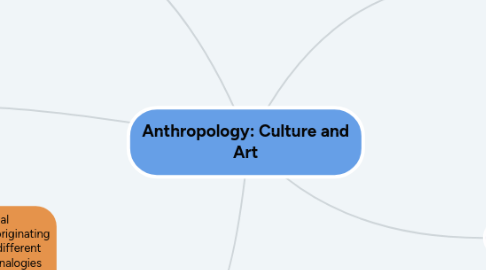Anthropology: Culture and Art
by Samantha Johnson

1. Oriental Art
1.1. Ancient Greece remained a basic standard of artistic value, and art history was strongly colored by moral judgements that compared to all other traditions more or less unfavorably with the realization of Classical ideas. (Burt, 40)
1.2. Orientalism: It was a European invention of art forms with different cultures outside of Europe. It conjured up images of despotism, exotic luxury, and cultural conservatism, as well as alien religions.
2. Primitive Art
2.1. Diffusionism explaining the culture of exotic peoples as borrowing "diffusion" from more advanced cultures, in terms that denied their ability to develop their own.
2.2. The invention of "primitive man" ignored these small-society values and conveniently avoided the difficult contradictions between ideas of universal humanity, cultural difference, and colonial self interest. (Burt 54).
3. Prehistoric Art
3.1. The discovery of human and animal remains and artefacts, evidently originating thousands of years ago in a very different environment and climate, led to analogies with the culture of contemporary peoples such as Native Americans, which made it reasonable to suppose that those people had to be hunters. (Burt, 70).
3.2. Processual archeology: focuses on evidence for cultural change. Archeologists examined the remains they found in order to have a better understanding of the people who left it behind.
4. The Origins of Art
4.1. Ethnographic collections: opportunistic and equivocal classification of artefact traditions were illustrated above as ethnographic collections, which were indentified less by what they were than by what they were not.
4.2. By the eighteenth century, the European elite had identified the knowledge and skill or create beautiful, thought provoking images as an art superior to the production of other artefacts and had established as disciplines the history of art (or at least of artists) and the connoisseurship of artistic value. (Burt, 11)
5. Classical Art
5.1. Rather than being treated as works of art in any way comparable wit the Greek sculpture, the Assyrian reliefs excited interest as illustrations of antiquity, identified with the contemporary exotic Orient from which they had been retrieved. (Burt, 28).
5.2. Hellenomania: Fetishism of ancient Greek art has been called, was reflected in the development of the history of art. Greek art was one of the highest art forms compared to different cultures.


